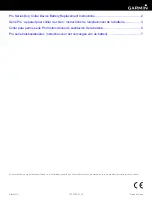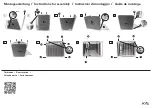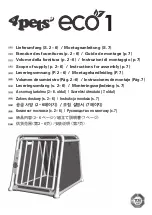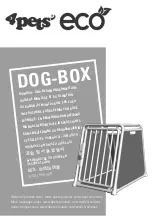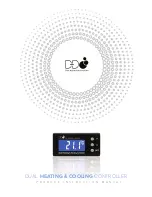
KGAET0201ETK: Installation Instructions
Manufacturer reserves the right to change, at any time, specifications and designs without notice and without obligations.
8
3. Dry fit remaining drainage system piping as shown in
,
and
, as appropriate for the specific
installation requirements, using field-supplied components.
4. IF ALLOWED BY LOCAL CODE, it is recommended that a short
piece of clear tubing (6-in./0.2 M) be applied near the exit of each
trap to allow observation of correct drain trap operation.
5. Support all drainage system piping as needed, and in compliance
with local codes.
6. Verify that all drainage piping is sloped toward the open drain or
condensate sump pump.
7. Cement external condensate drain trap to the trap-tee and
connection adapters, if any.
8. Cement all remaining drainage system piping as required.
System Commissioning and Checkout
Follow these steps to verify proper operation of the trap and drainage
system:
1. IF ALLOWED BY LOCAL CODE, it is recommended that a short
piece of clear tubing (6-in./15 cm) be applied near the exit of each
trap to allow observation of correct drain trap operation.
2. Prime the furnace internal condensate drainage trap per the furnace
installation instructions. Collect or observe excess priming water at
the end of the drainage piping system to verify that the trap is fully
primed.
3. Prime the Trap Kit connected to the venting system by slowly
pouring at least 32-oz. (1 liter) of water into the vent termination.
Collect or observe excess priming water at the end of the drainage
piping system to verify that the trap is fully primed.
4. Prime the Trap Kit connected to the combustion-air inlet piping
system (IF USED) by slowly pouring at least 32-oz. (1 liter) of
water into the combustion air inlet at the vent termination. Collect
or observe excess priming water at the exit of the drainage piping
system to verify that the trap is fully primed.
5. Once the furnace has been completely installed per the instructions
supplied with the furnace, run the furnace for at least one hour to
verify that all drainage systems are operating properly. Collect or
observe condensate drainage at the exit of the drainage piping
system to verify that the traps are fully primed and that the drain
system is not blocked.
6. If the clear tubing has been applied to the drainage system, observe
that EACH trap in the system is draining properly. NOTE that the
combustion-air inlet piping system will likely NOT produce
condensate.
7. Listen for gurgling noises in the venting and drainage systems. This
is an indication that there are dips in the piping system, or that the
traps are not operating properly. Correct the conditions as needed.
8. If there are water gurgling or sloshing sounds coming from the
inducer housing, this is an indication that not all of the vent piping
is sloped AWAY from the furnace and toward the Trap Kit. Correct
the conditions as needed.
9. Shut down the furnace.
10. Once all drainage checks and verifications have been made, return
the furnace to its normal operating condition.
11. Perform the venting system checklist as shown in the following
WARNING box.
WARNING
!
CARBON MONOXIDE POISONING HAZARD
Failure to follow these warnings could result in personal injury or
death.
The Internal Drain Trap Plug MUST BE APPLIED to the vent side of
the collector box trap connection of the furnace when the trap kit is
applied to the vent/exhaust piping system. Failure to do this may result
in vent gasses being released into the living space.
Failure to use a properly constructed trap(s) or NOT water-priming
trap(s) before operating furnace may allow positive pressure vent gases
to enter the structure through drain tube. Vent gases contain carbon
monoxide which is tasteless and odorless.
WARNING
!
CARBON MONOXIDE POISONING HAZARD
Failure to follow these warnings could result in personal injury or
death.
If water vapor (fog) rather than liquid condensate is observed exiting
the drain port any of the traps, that MAY be an indication that
combustion gasses are escaping through the drain system.
• RECHECK that all traps are properly water-primed.
• RECHECK that the Internal Drain Trap Plug is properly inserted into
the internal condensate drain trap in the furnace (see
).
• DO NOT operate the furnace until it is verified that all condensate
drain traps are operating properly.
Failure to use a properly constructed trap(s) or NOT water-priming
trap(s) before operating furnace may allow positive pressure vent gases
to enter the structure through drain tube. Vent gases contain carbon
monoxide which is tasteless and odorless.
CAUTION
!
UNIT OPERATION HAZARD
Failure to follow this caution could result in intermittent unit operation.
When the Internal Drain Trap Plug is used, the inducer housing may fill
with condensate if any of the vent piping that is external to the furnace
is sloped toward the furnace.
CAUTION
!
FIRE HAZARD
Failure to follow this warning could result in personal injury, death or
property damage.
Solvent cements and primers are combustible. Keep away from heat,
sparks and open flame. Use only in well-ventilated areas. Avoid
breathing in vapor or allowing contact with skin or eyes.















